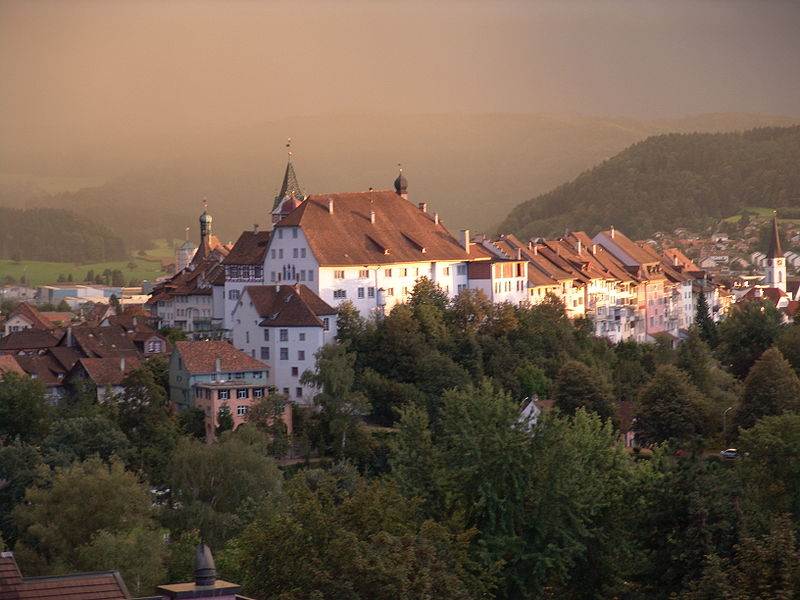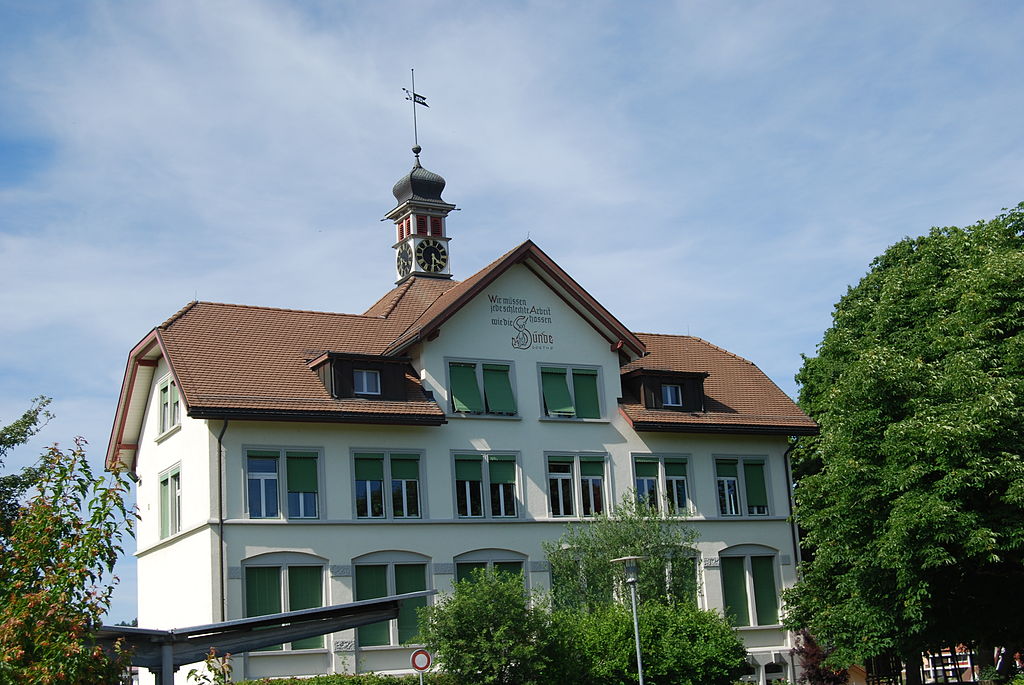Wil, Switzerland: 2 February 2016
A small walk on a nice day? Why not?
Climb some hills, ascend a tower, a leisurely stroll.
So while North Americans anxiously worried about whether their local groundhogs would see shadows, I decided to face my own shadows.
Prior to this day, the city of Wil represented only one thing: defeat.
I had worked for a private school in this town and found that the school and I had different philosophies in regards to teaching English.
I wanted the students to make an effort.
The school cared more about the students´ feelings than whether they actually learned.
I left under a cloud.
Many years ago, back in Quebec City, back in the 80s, a girl I was dating at the time had complained to me that walking along the Dufferin Terrace always reminded her of the unpleasantness of her last boyfriend.
I responded that the best way to deal with an old bad memory was to replace it with a new good moment.
I like to think my thinking worked then.
I decided to try similar thinking in regards to Wil.
Trains to St. Gallen and Wil, city bus to Bronschhofen.
The Old Schoolhouse, Bronschhofen
The pilgrimage church of Maria Dreibrunnen (Mary of the Three Fountains)
A bedroom community of Wil, Bronschhofen is known as a centre for electronics with Cicor Technologies / Swisstronics, a major manufacturer of memory cores for computers.
Up, up through streets and vineyards.
Up and onward through forest and fields to arrive at Wiler Tower:
On a clear day it seems that you can see half the world from the top platform.

The tower is an open structure, rising on six slanted columns from three equi-distant ground support points.
A circular stairway (189 steps) rises in the center of the columns, opening onto a roofed observation deck.

Although the structure rises some 34 meters above the ground, the deck is barely above the surrounding trees.
The structure is entirely of wood, all obtained from the surrounding forest.
The columns are Douglas fir and the stairway is of silver fir.
The wood was harvested in the early months of 2005 and allowed to dry naturally for a year before construction began.

The view from Wiler Tower looking south
I linger forever, trying to postpone returning to Wil, but eventually I know I must face the place.
I did not know that there was much I did not know about Wil, much that I had not seen.
Wil is more than its train station and pedestrian shopping street.
Rising above Wil Pond, the Hof, the former seat of power of the Prince-Abbott:

The old town of Wil and its pond
Inside the old city quarter of Wil
As I dig more into the stories and personalities that make up Wil, I begin to discover similarities with my own fall from grace:
Wil is said to be the “Güllen” of Swiss dramatist Friedrich Dürrenmatt´s tragicomic play, The Visit (Der Besuch der alten Dame) where an enormously wealthy older woman returns to her former hometown with a dreadful bargain:

She wants the townspeople to kill the man who got her pregnant then jilted her.
In exchange, she will provide enough money to revitalise the decrepit town.
The townspeople eventually agree.
Or consider the case of Anna Sutter:

Anna Sutter (26 November 1871 – 29 June 1910) was a Swiss operatic soprano.
Born in Wil, she earned a diploma in piano performance from the Bern Conservatory before studying singing in Munich.
She made her debut at the Volkstheater in Munich in 1892.
From 1892 to 1895, she was committed to the Stadttheater von Augsburg.
From 1895 until her death 15 years later she was a member of the Staatsoper Stuttgart.
Her career was cut short when she was murdered by conductor Aloys Obrist.
Prior to her death, she had broken off a romantic relationship with Obrist and become involved with the bass baritone Albin Swoboda Jr., who was just 17 years old at the time.
On 29 June 1910, Obrist broke into Sutter’s apartment, murdered her and committed suicide in the presence of Swoboda who was unable to stop him.
Unusual for an unmarried woman at that time she gave birth to a daughter in 1900 (from Hans Freiherr von Entress-Fürsteneck) and to a son in 1902 (from Hugo Reichenberger).
During her career she also performed as a guest artist at the Bavarian State Opera, the Berlin State Opera, and the Frankfurt Opera among others.
Her repertoire included Sieglinde in Richard Wagner´s The Ring Cycle and the title role in Richard Strauss´ Salome (an icon of dangerous female seductiveness, notably in regard to the erotic Dance of the Seven Veils).
Or ponder upon Alex Zülle:

During the 1990s he was one of the best cyclists in the world, winning back-to-back races in the 1996 and 1997 Vuelta a Espana, taking second place in the 1995 and the 1999 Tour de France.
He was world time-trial champion in Lugano in 1996.
In 1998, Zülle joined Festina.
The team was banned from the 1998 Tour de France amid doping allegations, which later became known as the Festina Affair.
Five Festina riders including Zülle admitted taking EPO. (erythropoietin: a performance-enhancing hormone)
Zülle said he took it to satisfy his sponsors.
On 28 November 1998, Zülle’s haemotocrit was found to be 52.3%, 2.3% over the limit.
Zülle retired in 2004 and held a party for his fans in Wil in October that year.
To be fair not all those who have shared in the life of Wil have become fallen heroes.
Wil has produced film makers and football players, TV show hosts and speed skaters, musicians and politicians, writers and monks.
Wandering along the waters of Wiler Pond or strolling the streets of the old quarter I begin to realize that it is not the place that creates the person but rather the people that create a place.
I take some comfort in this.








